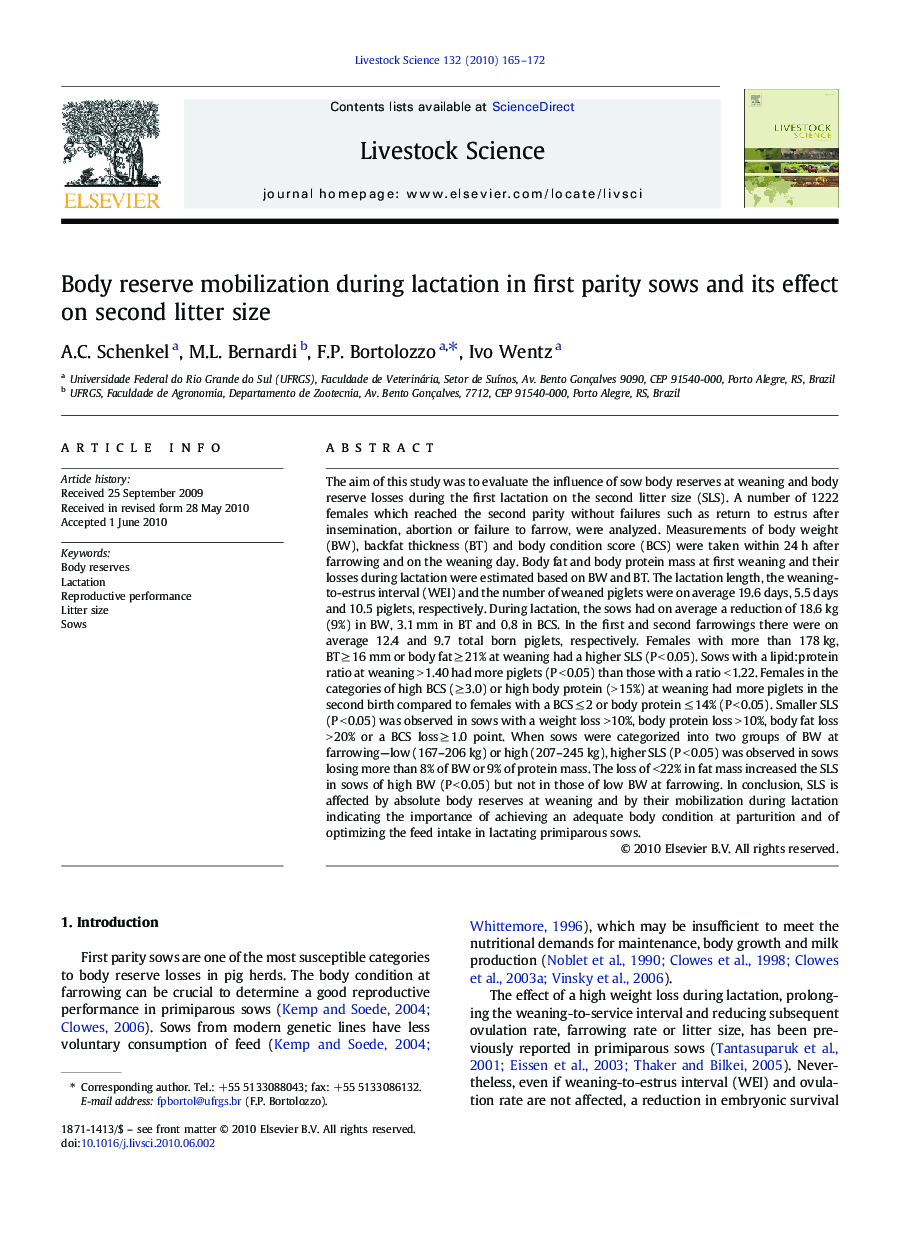| کد مقاله | کد نشریه | سال انتشار | مقاله انگلیسی | نسخه تمام متن |
|---|---|---|---|---|
| 2447767 | 1554000 | 2010 | 8 صفحه PDF | دانلود رایگان |

The aim of this study was to evaluate the influence of sow body reserves at weaning and body reserve losses during the first lactation on the second litter size (SLS). A number of 1222 females which reached the second parity without failures such as return to estrus after insemination, abortion or failure to farrow, were analyzed. Measurements of body weight (BW), backfat thickness (BT) and body condition score (BCS) were taken within 24 h after farrowing and on the weaning day. Body fat and body protein mass at first weaning and their losses during lactation were estimated based on BW and BT. The lactation length, the weaning-to-estrus interval (WEI) and the number of weaned piglets were on average 19.6 days, 5.5 days and 10.5 piglets, respectively. During lactation, the sows had on average a reduction of 18.6 kg (9%) in BW, 3.1 mm in BT and 0.8 in BCS. In the first and second farrowings there were on average 12.4 and 9.7 total born piglets, respectively. Females with more than 178 kg, BT ≥ 16 mm or body fat ≥ 21% at weaning had a higher SLS (P < 0.05). Sows with a lipid:protein ratio at weaning > 1.40 had more piglets (P < 0.05) than those with a ratio < 1.22. Females in the categories of high BCS (≥ 3.0) or high body protein (> 15%) at weaning had more piglets in the second birth compared to females with a BCS ≤ 2 or body protein ≤ 14% (P < 0.05). Smaller SLS (P < 0.05) was observed in sows with a weight loss > 10%, body protein loss > 10%, body fat loss > 20% or a BCS loss ≥ 1.0 point. When sows were categorized into two groups of BW at farrowing—low (167–206 kg) or high (207–245 kg), higher SLS (P < 0.05) was observed in sows losing more than 8% of BW or 9% of protein mass. The loss of < 22% in fat mass increased the SLS in sows of high BW (P < 0.05) but not in those of low BW at farrowing. In conclusion, SLS is affected by absolute body reserves at weaning and by their mobilization during lactation indicating the importance of achieving an adequate body condition at parturition and of optimizing the feed intake in lactating primiparous sows.
Journal: Livestock Science - Volume 132, Issues 1–3, August 2010, Pages 165–172